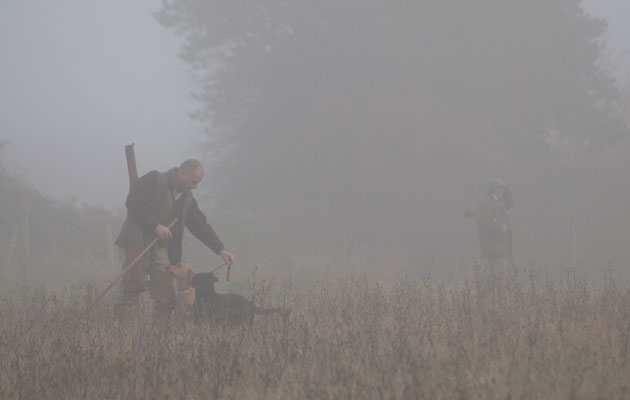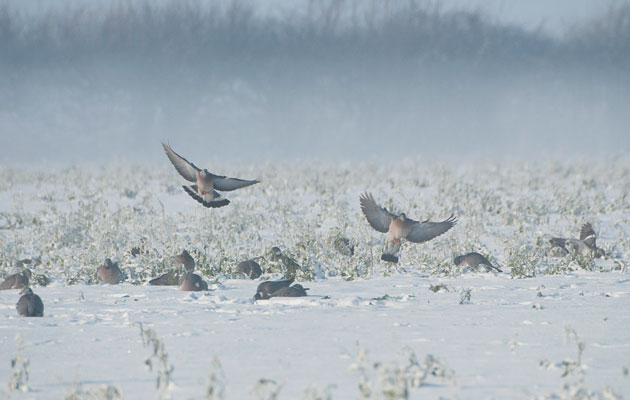Hypothermia in dogs
I’m often asked whether dogs suffer hypothermia. The answer is yes and there are some particular signs that owners of…
Win CENS ProFlex DX5 earplugs worth £1,149 – enter here
Richard Brigham's beginner's guide to shooting in bad weather explains how our varied climate can make or break a shooter's day

Shooting in bad weather can make or break a shooter’s day.
Whatever the time of year, I always pray for a good breeze when birds are ganging up on the crops. It helps you read their movements while out on a reconnaissance trip, determines the best place to site the hide when setting up, blows away the sound of shooting action and helps keep the birds on the wing.
Any movements you make in the hide are less conspicuous, and providing the decoy set-up is well placed, the weather helps channel the birds in pretty much where and how you want them.
The same applies when wildfowling. Duck and geese flight lower and the effects of shooting disturbance are minimized.
Frost – and indeed snow – often creates hopeless conditions for decoying pigeons. Though the birds must be desperate to feed for some reason they seldom react to decoys more than half- heartedly on frosty days.

Woodpigeon might still attack the rape during heavy snow, but you’ll find them far less interested in your decoys than usual
Snow gives you the opportunity to explore a familiar landscape in a new way. Every shape and form is shown in stark detail. You can see what has been moving around, shapes and forms are enhanced. Every impact on fresh snow can be clearly seen from a distance, making a delightfully easy pick-up.
Facing a sudden shower from an exposed peg just as a drive kicks off can be miserable so make sure you’re dressed for the weather.
Mind you, when you’re wildfowling and tucked up in a hide, a drain or a gutter getting cold, wet and muddy is all part of the experience and seldom seems to matter. Again having the right kit is crucial though. Weather permitting wildfowlers get to see some spectacular cloud formations at dawn and sunset.
A day in thick fog is potentially dangerous. Plus which both shooter and quarry are disorientated, game is seldom worth shooting, flying low and hugging the contours to keep the ground in sight.
Summer days can be tricky for shooting too though. I remember one early season partridge day. It was mild, calm and unseasonably warm, the air decidedly humid and oppressive. By the end of a shortened day most of the Guns had had enough, not to mention the beaters who were exhausted. Even the partridges were reluctant to exert themselves by actually taking to their wings and their lethargy was reflected by the day’s bag.
I’m often asked whether dogs suffer hypothermia. The answer is yes and there are some particular signs that owners of…
We advise you on what to wear shooting, whether at the clay ground or in the field
There’s one thing that’s guaranteed to ruin a day shooting or stalking and that is feeling cold and chill –…
To turn up at a shoot, the ground crisp with frost, the breeze strengthening and the weather looking fair for the day ahead gets the whole team in the right mood.
Get the latest news delivered direct to your door
Discover the ultimate companion for field sports enthusiasts with Shooting Times & Country Magazine, the UK’s leading weekly publication that has been at the forefront of shooting culture since 1882. Subscribers gain access to expert tips, comprehensive gear reviews, seasonal advice and a vibrant community of like-minded shooters.
Save on shop price when you subscribe with weekly issues featuring in-depth articles on gundog training, exclusive member offers and access to the digital back issue library. A Shooting Times & Country subscription is more than a magazine, don’t just read about the countryside; immerse yourself in its most authoritative and engaging publication.

